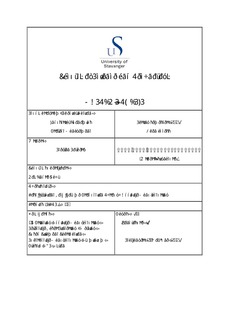Cost-Efficient Low-Volume Production Through Additive Manufacturing
Master thesis
Permanent lenke
http://hdl.handle.net/11250/2412466Utgivelsesdato
2016-06-15Metadata
Vis full innførselSamlinger
- Studentoppgaver (TN-ISØP) [1428]
Sammendrag
Additive manufacturing, commonly known as 3D Printing, is a production
method of rising popularity. The method works by adding layers of material,
in contrast to subtracting, which is the dominating method today. The
objective of this thesis has been to evaluate the cost-efficiency of producing
relatively complex parts through additive manufacturing, compared to subtractive
methods with production volumes less than 20 units.
Initial findings narrow the additive methods down from seven, to two
methods (Selective Laser Sintering/Melting and Fused Filament Fabrication)
which are found best fit for end use parts. Data is gathered by acquiring price
quotes from manufacturing companies for two plastic and two aluminium
parts, through subtractive and additive methods. In order to look for intersections
found at intermediate production volumes, the companies were asked
to give price for 1, 5 and 20 units of the same item.
Compared to subtractive methods, additive manufacturing processes are
found to exhibit less cost-decrease per additional unit produced. The cost of
producing a 150gram plastic part through the additive process was found to
be between a quarter, and half the cost of the subtractive machining processes.
In comparison, for a 15 gram part, additive manufacturing was found to be
even more cost-efficient, with prices ranging between 10% and 20% of the
alternative.
The metal additive manufacturing process was found to be 15% cheaper
than the subtractive at producing one single small part (100gram), whereas in
contrast, it was 50% more expensive when producing 20 units. For manufacturing
larger parts (500gram), it was found to be between 75 and 150% more
expensive than the subtractive machining.
As such this thesis complements existing literature on when to choose an
additive process over the subtractive, and shows that whilst plastic additive
processes are very cost-efficient for low volumes, metal additive manufacturing
still has a way to go before becoming the natural choice for low-volume
production
Beskrivelse
Master's thesis in Industrial economics

